If you see the error message, ‘This operation is not supported when reserved storage is in use‘, on your Windows 11/10 computer, read this post to learn how to fix it. The error usually appears when you try to disable Reserved Storage or perform an operation that conflicts with the Windows Reserved Storage feature.
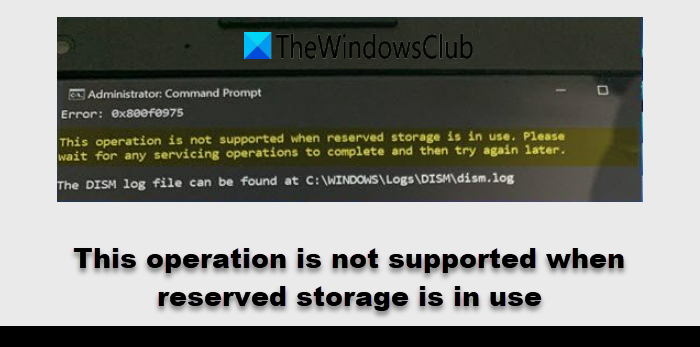
The complete error message reads:
This operation is not supported when reserved storage is in use. Please wait for any servicing operations to complete and then try again later.
Reserved storage is a feature that sets aside disk space for updates, apps, temporary files, and system caches. By reserving this space, Windows ensures that your PC has the necessary storage to perform updates and other essential tasks without running into space issues, which can lead to failed updates or degraded system performance.
This operation is not supported when reserved storage is in use
The error message ‘This operation is not supported when reserved storage is in use‘ is not usually a serious concern. It’s more of an informational message indicating that a specific operation cannot be completed at the moment because Windows is currently using Reserved Storage.
However, if the error becomes a persistent issue or prevents you from performing necessary tasks, it needs to be addressed immediately. You can use these solutions:
- Wait for the update or system operation to complete
- Pause Windows Updates
- Attempt to disable reserved storage in Safe Mode
- Run Disk Cleanup
Let us see this in detail.
1] Wait for the update or system operation to complete
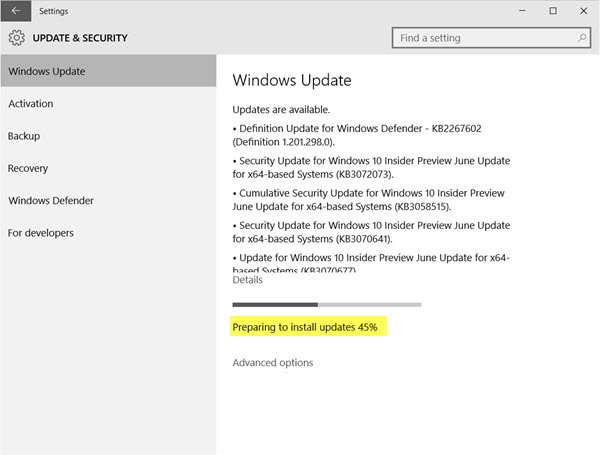
If Windows is currently using Reserved storage for an update or another system-related task, you might encounter a temporary block.
You may check for any ongoing updates by visiting the Windows Update section. Press Win + I and select Windows Updates from the left pane. If updates are in progress, you will see a status message indicating the current activity (e.g., ‘Downloading updates’, ‘Installing updates’, etc.).
To check for running system operations, open Task Manager, go to the Processes tab, and look for processes that are using a high amount of CPU, memory, or disk resources. Then go to the Services tab to see the status of various system services (you may sort the list by ‘Status’ to see which services are currently running).
If Windows updates are in progress, it might take a few minutes to an hour, depending on the size of the updates and your system’s performance. Other system operations, such as disk cleanup or background maintenance tasks, usually take a few minutes to complete.
The advice is to simply wait until Windows finishes the update or system task. Once the task is complete and Windows no longer needs the reserved storage, the block will be lifted, and you should be able to proceed with your intended operation without any issues.
2] Pause Windows Updates
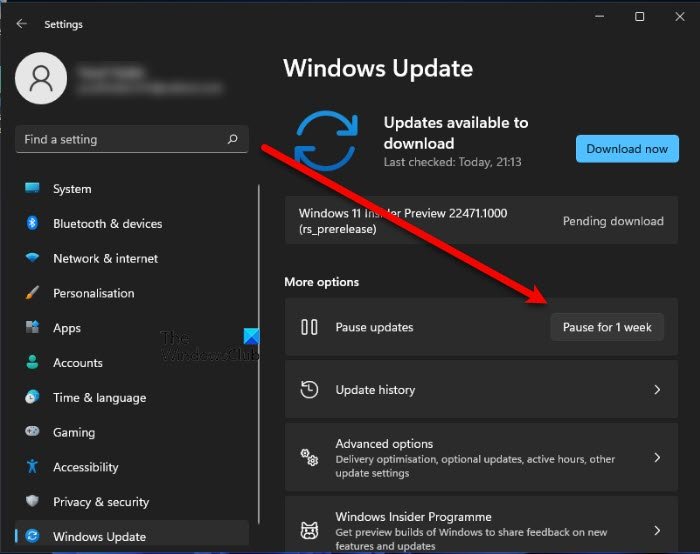
By pausing updates in Windows Settings, you can temporarily stop any pending Windows updates from being downloaded or installed. This means Windows won’t use reserved storage or additional disk space to store the Update files during the pause. If an update is in the middle of installation, it’s best to let it complete to avoid serious issues, including a corrupted system.
To pause updates, go to Settings > Windows Update, and click on Pause for 1 week next to Pause updates.
Once you’ve paused updates, retry the operation you were attempting and see if the error disappears. You may resume pause updates by clicking the Resume updates button on the Settings page.
3] Attempt to disable Reserved storage in Safe Mode
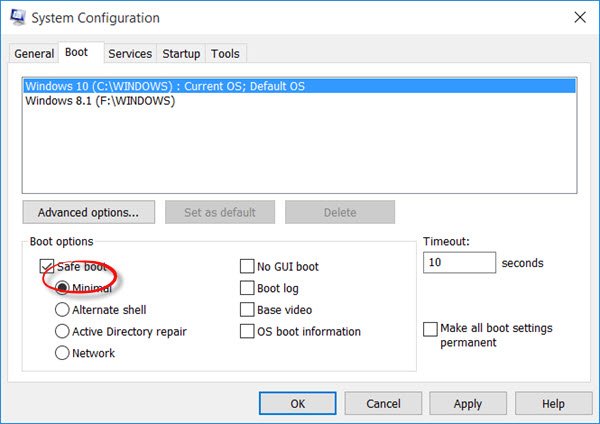
If the error appears when you try to disable Reserved Storage, it indicates that reserved storage is actively being used for important system operations. In such case, the system protects itself by not allowing you to change the state of reserved storage. Doing so could interfere with the ongoing tasks that rely on it, potentially leading to system instability or other serious issues.
To fix this, try disabling reserved storage in Safe Mode.
Press Win + R, type msconfig in the Run dialogue, and press Enter. In the System Configuration window, go to the Boot tab, check Safe boot, and select Minimal. Click Apply > OK and restart your computer. This will boot your system into Safe Mode.
Now try disabling Reserved Storage using the DISM command.
By booting into Safe Mode, you can minimize the chances of reserved storage being actively used, allowing you to disable it more effectively.
4] Run Disk Cleanup
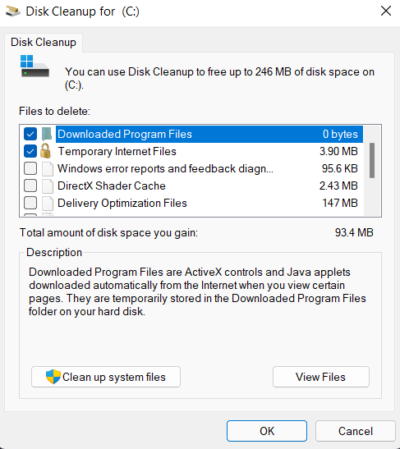
Disk Cleanup is a built-in Windows tool that helps clear out files that are no longer needed. By running Disk Cleanup, you can potentially free up a large amount of disk space. This additional space allows Windows to manage its operations, including updates and file storage, more efficiently, which can help prevent or resolve errors related to reserved storage.
To run Disk Cleanup, press the Windows key, type Disk Cleanup, and select the app. Choose the drive (usually the C: drive), select the files to delete, and then click OK.
I hope this helps.
Read: What is PortableBaseLayer Partition in Windows.
How do I disable Reserved storage in DISM?
To disable Reserved Storage in Windows using the Deployment Imaging Service and Management Tool (DISM), open Command Prompt as an administrator and execute the following command: DISM.exe /Online /Set-ReservedStorageState /State:Disabled. After running the command, restart your computer to apply the changes. You may run the DISM.exe /Online /Get-ReservedStorageState command to confirm that Reserved Storage is now disabled.
Should you disable Reserved storage?
You may disable reserved storage in Windows 11/10 if you’re critically low on disk space and need to free up space immediately or you need to perform a specific task and can re-enable it later. In most cases, it is advisable to keep reserved storage enabled to ensure that critical updates and system maintenance tasks always have the necessary resources.
Read Next: System Reserved Partition or EFI System Partition on wrong drive.